The Kate Festival in Ninh Thuan, a precious gem in Vietnam’s cultural treasury, is not only an occasion for the Cham community to commemorate their ancestors and pray for bountiful harvests, but also a wide-open door welcoming visitors from all directions to explore unique traditional values. Coming to Ninh Thuan during the Kate festival season, you will not only witness solemn rituals and immerse yourself in a culturally rich space, but also have the opportunity to experience unique and unforgettable cultural and culinary activities.
Deep Roots of the Kate Festival: Discovering Cham Culture Origins
The Kate Festival, named after the words “Katik” in Hindu and “Kattika” in Sanskrit, carries a sacred meaning of commemorating ancestors, deities, and those who have contributed to the Cham people. This festival is not just a simple cultural event, but also a symbol of the identity and origins of the ancient Champa kingdom.
However, throughout history, the Kate Festival in Ninh Thuan has undergone certain changes, influenced by Indian and Islamic cultures. This is clearly reflected in the diversity of rituals and customs of the three Cham religious communities: Ahier, Awal, and Islam. Despite differences in rituals due to the influence of Hinduism and Islam, the root of the Kate Festival remains the reverence for ancestors and deities, connecting the past, present, and future in the flow of Cham culture.
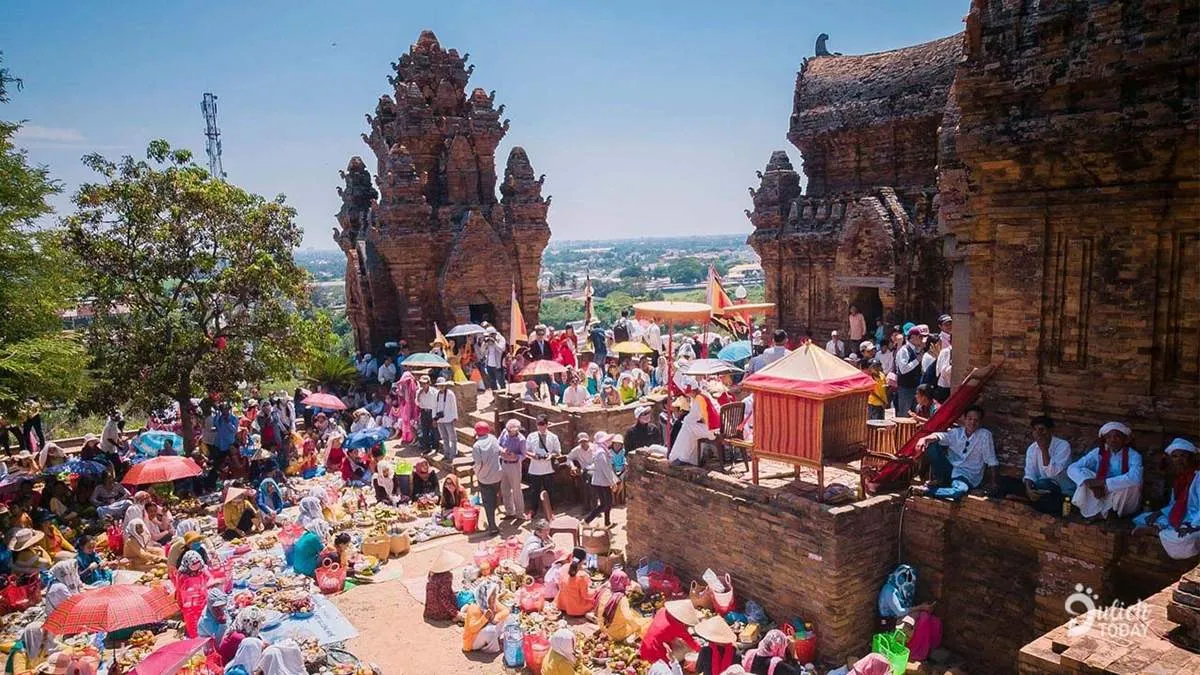
To understand the Kate Festival more deeply, we need to go back in time, to the history of the Champa kingdom from the 2nd to the 12th centuries, the most prosperous period of this kingdom. The introduction of Hinduism created a major turning point, deeply influencing the worship rituals of the Cham people, especially in important events such as harvest festivals, victory celebrations, or the coronation of kings.
By the 15th century, when the capital Vijaya (present-day Binh Dinh) fell in 1471, the Champa civilization gradually declined. The influence of Hinduism also faded, giving way to the rise of Islam. However, Cham culture still bears the imprint of both Hinduism and Islam, creating a colorful cultural picture. Today, the Cham community in Ninh Thuan and Vietnam still maintains this religious diversity, with the two largest communities being the Cham Ahier (Brahmanism) and Cham Awal (Bani). While the Ramưwan festival is a characteristic of the Bani Cham people, the Kate Festival in Ninh Thuan is a cultural symbol of the Brahman Cham people.
Time and Location: Plan Your Kate Festival Experience
The Kate Festival in Ninh Thuan usually takes place over 3 days, starting on the 1st day of the 7th month according to the Cham calendar, corresponding to the period from late September to early October in the Gregorian calendar. This is an ideal time for visitors to plan a trip to explore Ninh Thuan and immerse themselves in the bustling festival atmosphere.
The main locations for the festival are ancient and sacred temple towers, including:
- Po Nagar Temple Tower: Located in Huu Duc village, Phuoc Huu commune, Ninh Phuoc district.
- Po Klong Garai Tower: Located in Do Vinh ward, Phan Rang – Thap Cham city.
- Po Rome Tower: Located in Hau Sanh village, Phuoc Huu commune, Ninh Phuoc district.
Traditionally, the rituals of the Kate Festival will take place in order from the temple towers, then spread to villages and communes, and finally to each family. This custom demonstrates community cohesion, from collective to individual, and is cherished and preserved by the Cham people through thousands of years of history.
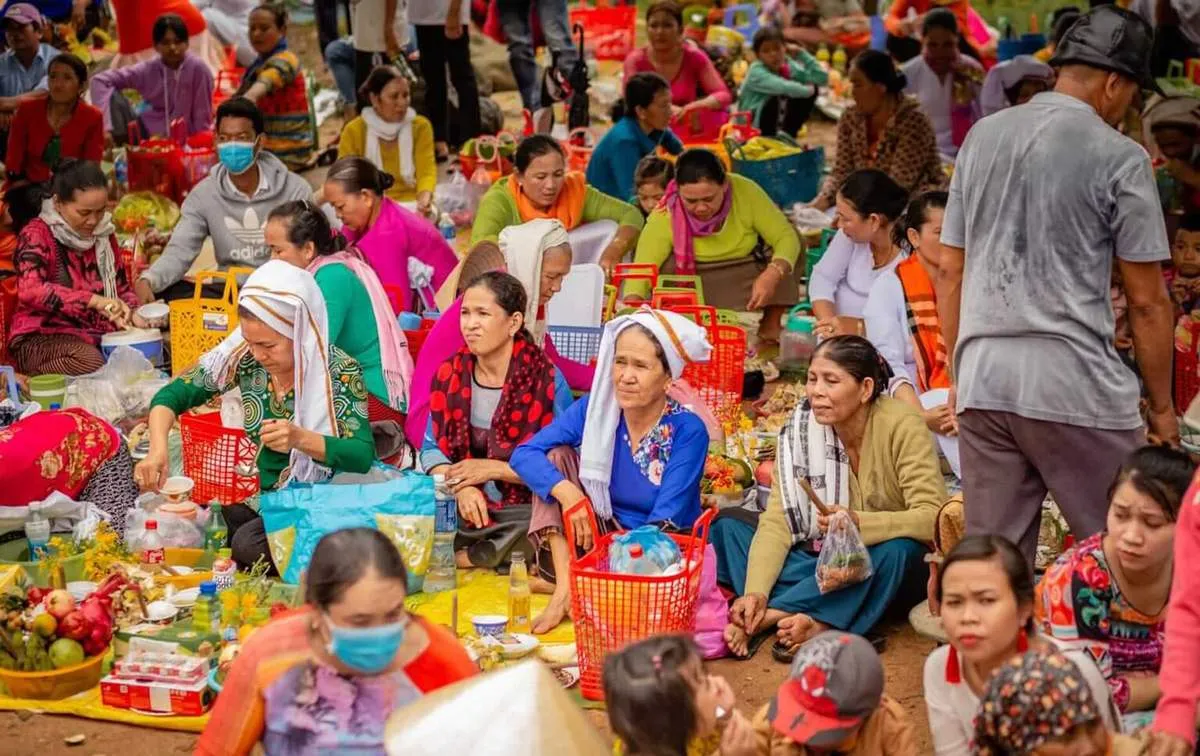
Immerse Yourself in the Sacred Space: Main Rituals of the Kate Festival
Experiencing the Kate Festival is a journey to discover unique rituals, imbued with the spiritual and cultural values of the Cham people. These rituals take place simultaneously at all three temple towers, following a common script, demonstrating unity in the beliefs and culture of the community. Basically, the festival is divided into three main stages: worshiping at temple towers, worshiping in villages, and worshiping at home.
Rituals at the Temple Towers: Spiritual Connection with Deities
The Kate Festival in Ninh Thuan opens with solemn worship rituals at the temple towers, presided over by the master of ceremonies (the ritual leader). In the sacred space, the sound of the Kanhi drum resonates with solemn hymns, and the shaman performs rituals offering sacrifices to the deities. Then, the master of ceremonies will preside over the statue bathing ceremony, an important ritual performed by Brahman monks.
Offerings for the Kate Festival at the temple towers are prepared very elaborately and meticulously, including:
- A large goat and three chickens to perform the purification ceremony in the tower.
- Five trays of rice with traditional dishes such as soup and goat meat.
- A vegetarian tray of rice with sesame salt.
- Three rice cakes and fresh fruits.
- Wine, eggs, sticky rice, betel and areca nuts, and many other items.
These are offerings presented on the towers, while at the foot of the towers are hundreds of other offering trays prepared by the people with sincerity, expressing gratitude and reverence for the deities.
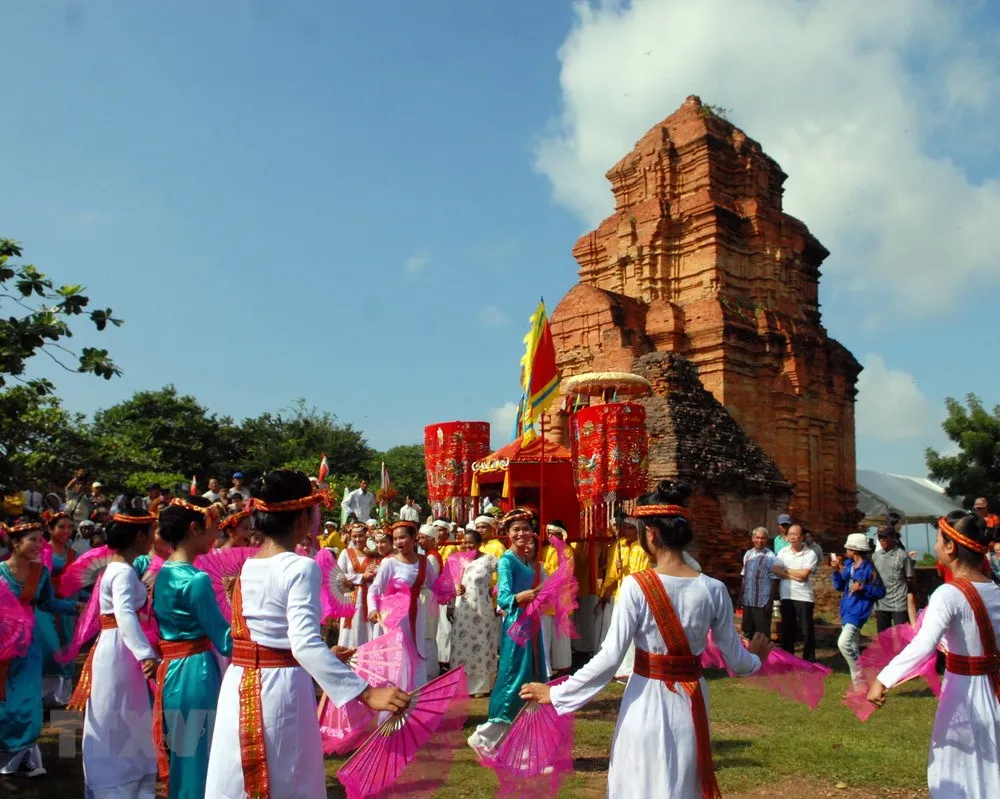
The Kate Festival process at the tower takes place in solemn steps:
- Costume procession: The ritual begins with the Cham people receiving costumes from the Raglai younger siblings, brought down from the mountain at around 7 am. The costume procession takes place solemnly, showing respect for the deities.
- Tower opening ceremony: The master of ceremonies performs the tower opening ritual, inviting deities to attend the ceremony and enjoy the offerings presented by the people.
- Statue bathing ceremony (Manei yang): After opening the tower is the statue bathing ceremony, a purification ritual with deep spiritual meaning.
- Statue dressing ceremony (Anguei khan aw kapo): The statue is dressed in new costumes, showing respect and renewal.
- Grand ceremony (Adaoh tama): The most important part of the festival, taking place from around 9 am and lasting until 11 am. The grand ceremony is the time of highest concentration of worship rituals, prayers, and expression of the community’s sincerity.
After completing the rituals at the temple towers, the people will return to their villages to continue the festival activities, creating a vibrant and bustling atmosphere spreading throughout the community.
Vibrant Atmosphere in the Village: Village Festivals and Community Bonding
The Kate Festival worship ritual in the village is organized in parallel with the festival activities, creating a colorful cultural space, combining spiritual and community living elements. Before the festival, villagers join hands to prepare everything, from cleaning temples, decorating village houses, to preparing grounds and traditional dishes. The bustling preparation atmosphere demonstrates the solidarity and bonding of the community.
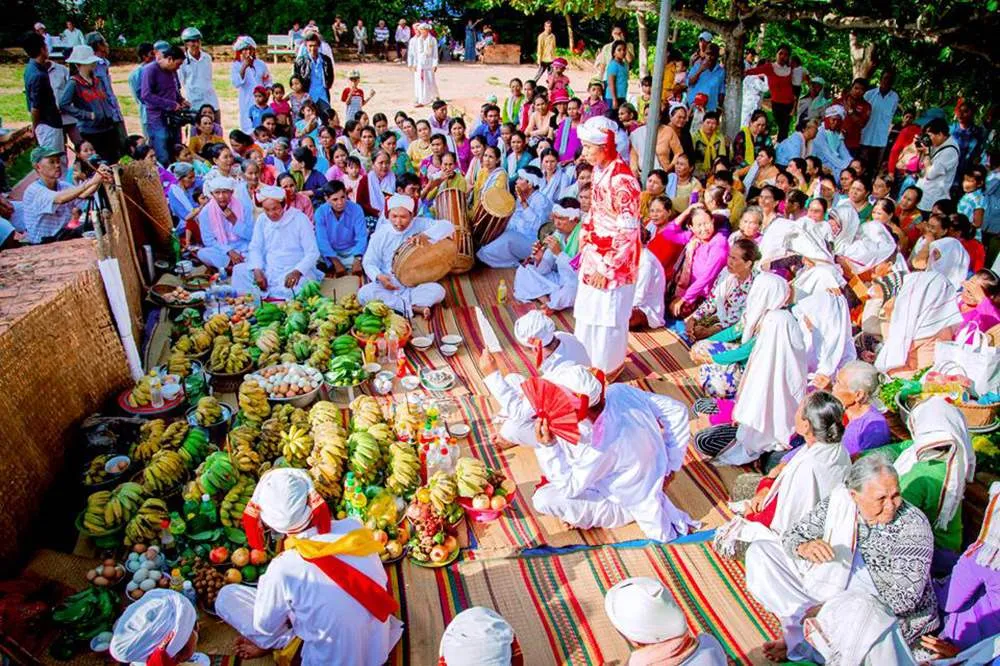
The rituals in the village are also performed as solemnly as the rituals at the temple towers. According to Cham beliefs, each village worships a separate deity, but all share the purpose of worshiping the village god, similar to the custom of worshiping Thanh Hoang of the Kinh people. The chief celebrant in the village is usually a respected person, trusted by the villagers, representing the community to offer sacrifices and pray for the gods to bless the villagers with peace, health, and bountiful harvests.
The festival part of the Kate Festival in the village takes place extremely lively with many unique cultural and artistic activities. People and visitors immerse themselves in traditional art performances such as Cham dances, Ka-tei singing, Saranai horn blowing, Ghi Nang drum playing, recreating the unique cultural features of the Cham people. In addition, traditional folk games are also organized, attracting a large number of participants, creating a joyful and bustling atmosphere.
Cozy Kate Festival at Home: Honoring Ancestors and Family
After the Kate Festival in the village ends, the Cham people return home to perform the ancestral worship ceremony. The chief celebrant is usually the oldest person in the lineage, representing the family to offer sacrifices to ancestors. All family members, even those from afar, try to return to reunite, preparing a feast to worship ancestors together.
In the cozy atmosphere of the family, everyone prays together, expressing gratitude to ancestors and wishing for a new year of peace, happiness, and prosperous business. The Kate Festival is not only an occasion to honor ancestors, but also an opportunity to strengthen family affection and consolidate relationships between family members. This is a beautiful traditional cultural feature, demonstrating the Cham people’s respect for family values and origins.
Kate Culinary Experience: Unique Cham Flavors
The Kate Festival is not only a journey to discover spiritual culture, but also a great opportunity to enjoy the unique dishes of the Cham people. Cham cuisine is a delicate blend of the rich flavors of natural spices and skillful processing methods, creating unique and unforgettable dishes.
During the festival days, you will have the opportunity to enjoy many traditional dishes such as:
- Com lam (Bamboo rice): Fragrant sticky rice cooked in bamboo tubes, carrying the unique flavor of the mountains and forests.
- Grilled goat meat: A famous dish of Ninh Thuan, with fresh goat meat marinated in spices and grilled over charcoal, fragrant and flavorful.
- Goi ca mai (Maidenhair fish salad): A refreshing, sweet and sour salad, made from fresh maidenhair fish, combined with herbs and unique spices.
- Banh can, banh xeo (Mini savory pancakes, savory crepes): Simple, familiar pancakes but with the special flavor of Ninh Thuan land.
- Ruou can (Tube wine): Traditional drink of the Cham people, made from rice and natural leaf yeast, with a fragrant and characteristic flavor.
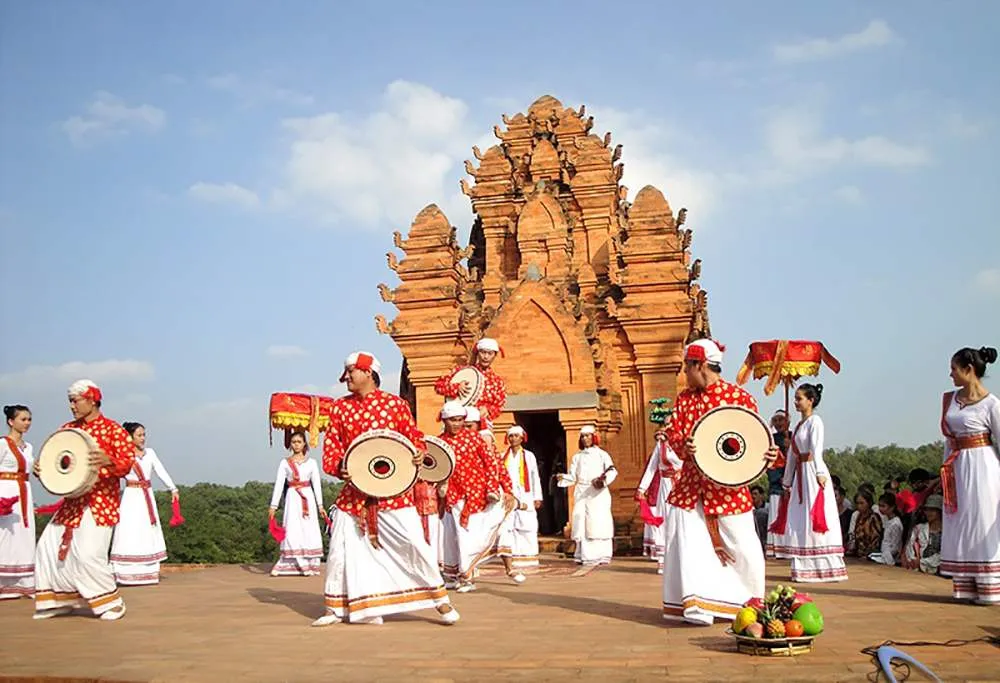
Enjoying Kate Festival cuisine is not only a taste experience, but also a way for you to learn more about the culture, customs, and life of the Cham people. Take the time to discover these unique flavors to make your festival experience more complete.
Tips and Notes for Participating in the Kate Festival
To have a complete and meaningful Kate Festival experience, you should note a few things:
- Time: The Kate Festival usually takes place in late September or early October of the Gregorian calendar. Follow the information to plan accordingly.
- Location: The festival is organized in many different locations, including temple towers, villages and communes, and families. You can choose to participate in activities at temple towers to admire the main rituals, or immerse yourself in the festival atmosphere in villages and communes to experience community culture.
- Dress code: You should choose polite and discreet clothing when participating in the festival, especially when visiting sacred temple towers.
- Respect for culture: Please respect the rituals and customs of the Cham people. Maintain order, do not make noise, or litter in the festival area.
- Learn in advance: Learn about the Kate Festival, rituals, activities, and locations in advance to be best prepared.
- Combine sightseeing: Combine visiting the Kate Festival with exploring other famous tourist attractions of Ninh Thuan such as Ninh Chu beach, Vinh Hy Bay, grape gardens, Nam Cuong sand dunes, etc.
Conclusion
Experiencing the Cham Kate Festival is a unique cultural journey, bringing you to long-standing traditional values, sacred rituals, and a bustling and vibrant festival atmosphere. This is not only an opportunity to discover Cham culture but also a chance for you to immerse yourself in the colorful space of Ninh Thuan land, feeling the hospitality and friendliness of the local people. Come to Ninh Thuan and experience the Kate Festival to have memorable memories and a deeper understanding of Vietnamese culture.